[My Biography]
[Guinness Contest]
[Official Blue Books]
Film And Television: Video Game Film Festival announced
Posted by Spike Wyatt @ 6:55
An interesting, and historical idea which just arrived in my inbox - a Video Game Film
Festival. Here's the info:
"In the last 25 years of film and TV viewing, video games have been the focus of countless
feature films, TV commercials, game shows, news clips and special features, all heralding
the cultural impact felt by these new marvels of space age technology.
For the first time, the historical legacy created by these film and TV appearances will be
celebrated with a special event called the 1st Annual Video Game Film Festival, which will
take place during the 2001 Classic Video Game World Championship, Saturday, June 2, 2001,
at the famous Funspot Family Fun Center in Weirs Beach, New Hampshire. Co-sponsored by
Funspot and the Twin Galaxies Intergalactic Scoreboard, the Festival will treat the viewers
to a wide sampling of short features, full-length films and broadcast news clips that define
different periods in the evolution of the video game.
Among the pieces to be viewed is Hollywood Zap, a little-known feature film that was shot in
arcades around Los Angeles in 1983. It reached very few screens before it made its way to
videotape and is now nearly impossible to find. Produced by the late Ben Frank, who also
starred in the lead role, the story depicts the adventures of a Wall Street stockbroker who
leaves New York to find the "Zap," the world's greatest video game player, who is famous for
playing the game Zaxxon.
Other historically significant pieces to be viewed are the "That's Incredible Ms. Pac-Man
World Championship", which was broadcast on October 11, 1982, and the "North American Video
Game Olympics", which was co-produced by That's Incredible and Twin Galaxies on January 8-9,
1983. This Olympics is now viewed to be video game history's first video game world
championship.
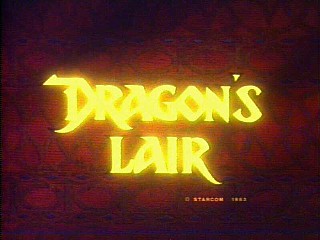 Dragon's Lair - 1983
The highlight of the event will be the screening of the special "Dragon's Lair" episode of
Starcade - The Starcade television show was history's first and only Video Arcade game show.
This special episode focuses solely on Dragon's Lair, a laser game hotline, a champion
Dragon's Lair player that completes all screens, a Space Ace Hotline and a 30-second
Starcade commercial that you don't want to miss."
-----------------------------------------------------------------------------------------
Dragon's Lair - 1983
The highlight of the event will be the screening of the special "Dragon's Lair" episode of
Starcade - The Starcade television show was history's first and only Video Arcade game show.
This special episode focuses solely on Dragon's Lair, a laser game hotline, a champion
Dragon's Lair player that completes all screens, a Space Ace Hotline and a 30-second
Starcade commercial that you don't want to miss."
-----------------------------------------------------------------------------------------
 Dragons Lair Marquee
DRAGON'S LAIR 3D: RETURN TO THE LAIR SHIPS TO STORES NATIONWIDE
Dragons Lair Marquee
DRAGON'S LAIR 3D: RETURN TO THE LAIR SHIPS TO STORES NATIONWIDE
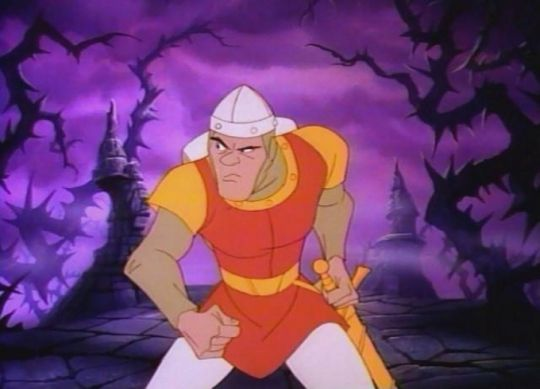 Dragons Lair Marquee
Dirk the Daring Returns in an All-New, 3D Adventure for the Xbox and PC
SAN FRANCISCO, CA - November 18, 2002 - Ubi Soft Entertainment, one of the world's
largest video game publishers, announced Dragon's Lair 3D: Return to the Lair for the
Xbox(tm) video game system from Microsoft and the PC has shipped to retail stores
nationwide. Developed by Dragonstone Software, Dragon's Lair 3D features the same fun,
pick-up-and-play gameplay that made the arcade version a blockbuster hit in 1983. Now
gamers will be able to experience Dragon's Lair 3D with the highest quality graphics and
sound available today. Dragon's Lair 3D is rated "T-Teen" and is available for a suggested
retail price of $49.99 on Xbox and $29.99 on PC.
Dragons Lair Marquee
Dirk the Daring Returns in an All-New, 3D Adventure for the Xbox and PC
SAN FRANCISCO, CA - November 18, 2002 - Ubi Soft Entertainment, one of the world's
largest video game publishers, announced Dragon's Lair 3D: Return to the Lair for the
Xbox(tm) video game system from Microsoft and the PC has shipped to retail stores
nationwide. Developed by Dragonstone Software, Dragon's Lair 3D features the same fun,
pick-up-and-play gameplay that made the arcade version a blockbuster hit in 1983. Now
gamers will be able to experience Dragon's Lair 3D with the highest quality graphics and
sound available today. Dragon's Lair 3D is rated "T-Teen" and is available for a suggested
retail price of $49.99 on Xbox and $29.99 on PC.
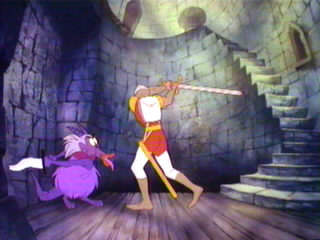 Dragons Purple Dragon
"Dragon's Lair is a classic, landmark game that has always pushed the gaming industry's
limits in terms of graphics and gameplay," said Tony Kee, vice president of marketing for
Ubi Soft Entertainment. "Dragon's Lair 3D is now the FIRST Xbox title to feature 1080i
HDTV compatibility, breathing vibrant color to the characters and environments that jump
off the screen!"
Dragons Purple Dragon
"Dragon's Lair is a classic, landmark game that has always pushed the gaming industry's
limits in terms of graphics and gameplay," said Tony Kee, vice president of marketing for
Ubi Soft Entertainment. "Dragon's Lair 3D is now the FIRST Xbox title to feature 1080i
HDTV compatibility, breathing vibrant color to the characters and environments that jump
off the screen!"
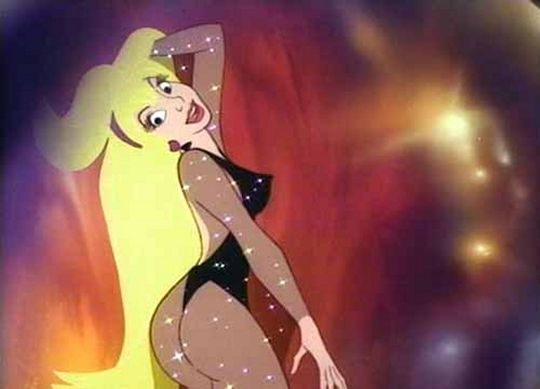 Dragons Lair - Save Daphne from the clutches of the Dragon
The Legend Continues!
True to the classic arcade phenomenon, Dragon's Lair sets players against the menacing
dragon Singe and the evil wizard Mordroc to save the beautiful Princess Daphne. With
full control of Dirk the Daring, a valiant but clumsy knight, Dragon's Lair 3D players
fight their way through the castle's treacherous, labyrinthine-like halls to overcome
new monsters and obstacles lurking in the shadows. Incredible new gameplay includes
jumping over flaming pits, climbing ropes to fly across chasms, and battling swarms
of the wizard's minions with Dirk's sword and crossbow. Other game features include:
" 18 large, detailed, action-packed levels featuring more than 40 environments to explore
and 250+ rooms with numerous puzzles, traps, power-ups and hidden secrets to uncover
" A real-time, 3D modeled and hand painted, textured world features new next-generation
visuals" The first Xbox title to feature 1080i High Definition TV graphics mode, along
with 5.1 Dolby Digital Audio and 16:9 anamorphic widescreen support
" New intro and ending movies hand-animated by legendary animator Don Bluth
"Dragon's Lair is a franchise loved by fans all over the world for more than 20 years,"
said Rick Dyer, president and CEO of Dragon's Lair, LLC. "Reinventing this franchise into
a three-dimensional world utilizing the most powerful game graphics ever will be a treat
for Dirk fans everywhere."
About Ubi Soft Entertainment
Ubi Soft Entertainment is an international producer, publisher and distributor of
interactive entertainment products. A leading company in the multimedia industry, Ubi
Soft's strong and diversified line-up has grown considerably, as has Ubi Soft itself.
As well as steadfastly continuing to partner with several high-profile companies, Ubi
Soft has also confirmed its presence on the global market by developing its own exceptional
properties. Founded in 1986 in France, Ubi Soft is now present on every continent, both
through offices in 22 different countries including the United States, Brazil, Morocco,
Germany and China and through sales of products in over 50 countries. The group is dedicated
to delivering high-quality, cutting-edge video game titles to consumers around the world.
To learn more, visit www.ubi.com.
About Dragon's Lair LLC
Based in San Diego, California, Dragon's Lair LLC is a joint venture between Digital
Leisure and the original creators of the 1983 arcade smash hit Dragon's Lair. Dragon's
Lair LLC is comprised of legendary animation professionals Don Bluth, Gary Goldman and
John Pomeroy, as well as veteran video game creator Rick Dyer. Rounding out the partnership
is multimedia industry veteran David Foster, president of Digital Leisure Inc. and the
publisher of the Dragon's Lair 2D versions. Dragon's Lair LLC is committed to creating
state-of-the-art interactive titles that are supported by motion picture, broadcast and
toy ventures.
2002 Ubi Soft Entertainment. All rights reserved. Ubi Soft Entertainment and the Ubi
Soft logo are registered trademarks of Ubi Soft, Inc.
The Dragon's Lair name, logo, characters and indicia are either registered trademarks,
trademarks, or copyrights of Dragon's Lair LLC and Don Bluth, and are used under license
with permission.
Dragons Lair - Save Daphne from the clutches of the Dragon
The Legend Continues!
True to the classic arcade phenomenon, Dragon's Lair sets players against the menacing
dragon Singe and the evil wizard Mordroc to save the beautiful Princess Daphne. With
full control of Dirk the Daring, a valiant but clumsy knight, Dragon's Lair 3D players
fight their way through the castle's treacherous, labyrinthine-like halls to overcome
new monsters and obstacles lurking in the shadows. Incredible new gameplay includes
jumping over flaming pits, climbing ropes to fly across chasms, and battling swarms
of the wizard's minions with Dirk's sword and crossbow. Other game features include:
" 18 large, detailed, action-packed levels featuring more than 40 environments to explore
and 250+ rooms with numerous puzzles, traps, power-ups and hidden secrets to uncover
" A real-time, 3D modeled and hand painted, textured world features new next-generation
visuals" The first Xbox title to feature 1080i High Definition TV graphics mode, along
with 5.1 Dolby Digital Audio and 16:9 anamorphic widescreen support
" New intro and ending movies hand-animated by legendary animator Don Bluth
"Dragon's Lair is a franchise loved by fans all over the world for more than 20 years,"
said Rick Dyer, president and CEO of Dragon's Lair, LLC. "Reinventing this franchise into
a three-dimensional world utilizing the most powerful game graphics ever will be a treat
for Dirk fans everywhere."
About Ubi Soft Entertainment
Ubi Soft Entertainment is an international producer, publisher and distributor of
interactive entertainment products. A leading company in the multimedia industry, Ubi
Soft's strong and diversified line-up has grown considerably, as has Ubi Soft itself.
As well as steadfastly continuing to partner with several high-profile companies, Ubi
Soft has also confirmed its presence on the global market by developing its own exceptional
properties. Founded in 1986 in France, Ubi Soft is now present on every continent, both
through offices in 22 different countries including the United States, Brazil, Morocco,
Germany and China and through sales of products in over 50 countries. The group is dedicated
to delivering high-quality, cutting-edge video game titles to consumers around the world.
To learn more, visit www.ubi.com.
About Dragon's Lair LLC
Based in San Diego, California, Dragon's Lair LLC is a joint venture between Digital
Leisure and the original creators of the 1983 arcade smash hit Dragon's Lair. Dragon's
Lair LLC is comprised of legendary animation professionals Don Bluth, Gary Goldman and
John Pomeroy, as well as veteran video game creator Rick Dyer. Rounding out the partnership
is multimedia industry veteran David Foster, president of Digital Leisure Inc. and the
publisher of the Dragon's Lair 2D versions. Dragon's Lair LLC is committed to creating
state-of-the-art interactive titles that are supported by motion picture, broadcast and
toy ventures.
2002 Ubi Soft Entertainment. All rights reserved. Ubi Soft Entertainment and the Ubi
Soft logo are registered trademarks of Ubi Soft, Inc.
The Dragon's Lair name, logo, characters and indicia are either registered trademarks,
trademarks, or copyrights of Dragon's Lair LLC and Don Bluth, and are used under license
with permission.
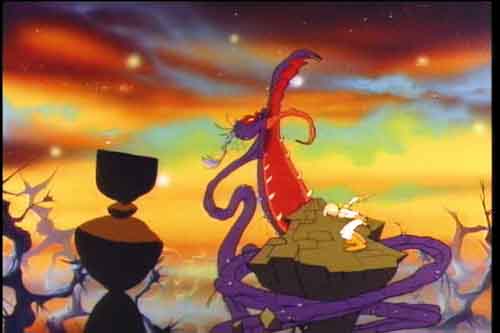 Dragons Lair 20th Anniversary New release in 2002
The Dragon's Lair 3D game 2002 Dragon's Lair LLC and Don Bluth. All rights reserved.
The original Dragon's Lair game 1983 Bluth Group Ltd. All rights reserved. All other
trademarks are the property of their respective owners.
Xbox is a trademark of Microsoft Corporation in the United States and/or other countries
-------------------------------------------------------------------------------------
Player 2 Stage 6: Laser Daze Link
The following information is provided by the following author: William Hunter
The site name is The Dot Eaters: Video Game History 101 Link
The link is http://www.thedoteaters.com
And the link directly to the page with the Dragon's Lair info is Link
http://www.thedoteaters.com/p2_stage6.php
In 1982, the arcade videogame industry makes three times as much money as the movie
biz, with double the number of videogame arcades than there were in 1980. While there's
no dire disaster like with their home console brethren, arcade gaming faces a slump in
1983. Even though hits like Star Wars, TRON and Zaxxon keep collecting quarters, business
is down some 40%, and it is estimated that up to 1/2 of the arcades formed during the
boom will close this year.
Dragons Lair 20th Anniversary New release in 2002
The Dragon's Lair 3D game 2002 Dragon's Lair LLC and Don Bluth. All rights reserved.
The original Dragon's Lair game 1983 Bluth Group Ltd. All rights reserved. All other
trademarks are the property of their respective owners.
Xbox is a trademark of Microsoft Corporation in the United States and/or other countries
-------------------------------------------------------------------------------------
Player 2 Stage 6: Laser Daze Link
The following information is provided by the following author: William Hunter
The site name is The Dot Eaters: Video Game History 101 Link
The link is http://www.thedoteaters.com
And the link directly to the page with the Dragon's Lair info is Link
http://www.thedoteaters.com/p2_stage6.php
In 1982, the arcade videogame industry makes three times as much money as the movie
biz, with double the number of videogame arcades than there were in 1980. While there's
no dire disaster like with their home console brethren, arcade gaming faces a slump in
1983. Even though hits like Star Wars, TRON and Zaxxon keep collecting quarters, business
is down some 40%, and it is estimated that up to 1/2 of the arcades formed during the
boom will close this year.
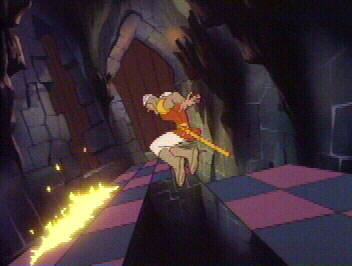 Dragons Lair Fire
One wonders if perhaps the
creators were also inspired by the 1981 fantasy film "Dragonslayer", starring Peter
MacNicol and Ralph Richardson. Daphne herself bears more than a passing resemblance to
Marilyn Monroe, and her looks are rumoured to be inspired from the pages of Playboy. At
each of the 800 decision points in the storyline, the player must use either the joystick
or the sword button to direct the on-screen Dirk to make a move. If it's the correct one,
the laserdisc scans to the next part of the game.
Dragons Lair Fire
One wonders if perhaps the
creators were also inspired by the 1981 fantasy film "Dragonslayer", starring Peter
MacNicol and Ralph Richardson. Daphne herself bears more than a passing resemblance to
Marilyn Monroe, and her looks are rumoured to be inspired from the pages of Playboy. At
each of the 800 decision points in the storyline, the player must use either the joystick
or the sword button to direct the on-screen Dirk to make a move. If it's the correct one,
the laserdisc scans to the next part of the game.
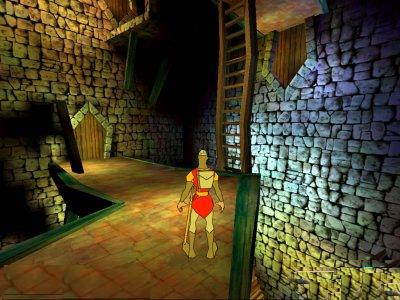 New Dragons Lair
If it's the wrong one, a death scene
is displayed and the player loses a life. The gang at Bluth Group, with a staff of 70,
logs hundred of unpaid hours of overtime to finish the animation. Dragon's Lair consists
of a total of 27 minutes of animation, or 50,000 drawings. Played straight through without
making a mistake, playing time is a total of six minutes. Each second of screen time takes
24 hand-painted cells, a number higher than the industry standard, and the total animation
budget comes out to 1.3 million dollars. Although there are 42 different rooms in Singe's
castle, the player only has to survive 18 of them to win. To keep the game from becoming
too repetitive, the system cycles randomly through the pool of rooms. Keeping costs down
rules out professional voice acting; talent is culled from the staff. Dirk himself is
practically mute, save for his occasional grunts of effort, Homer Simpsonish yelps, or
screams of anguish during the numerous and frequently gruesome death scenes. His
exultations are provided by assistant editor Dan Molina, and clean-up animator Vera
Lanpher is the breathy voice of Daphne. Chris Stone is responsible for the brief musical
stings and bridges in the game.
New Dragons Lair
If it's the wrong one, a death scene
is displayed and the player loses a life. The gang at Bluth Group, with a staff of 70,
logs hundred of unpaid hours of overtime to finish the animation. Dragon's Lair consists
of a total of 27 minutes of animation, or 50,000 drawings. Played straight through without
making a mistake, playing time is a total of six minutes. Each second of screen time takes
24 hand-painted cells, a number higher than the industry standard, and the total animation
budget comes out to 1.3 million dollars. Although there are 42 different rooms in Singe's
castle, the player only has to survive 18 of them to win. To keep the game from becoming
too repetitive, the system cycles randomly through the pool of rooms. Keeping costs down
rules out professional voice acting; talent is culled from the staff. Dirk himself is
practically mute, save for his occasional grunts of effort, Homer Simpsonish yelps, or
screams of anguish during the numerous and frequently gruesome death scenes. His
exultations are provided by assistant editor Dan Molina, and clean-up animator Vera
Lanpher is the breathy voice of Daphne. Chris Stone is responsible for the brief musical
stings and bridges in the game.
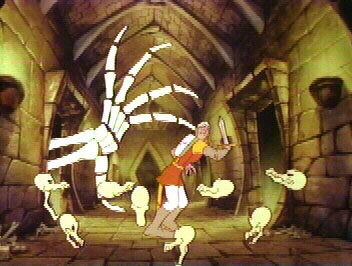 Dragons Lair Spider
1983
Into the Dragon's Lair
Cinematronics releases Dragon's Lair in 1983, which was the first arcade game to
feature laser-disc technology. As such, the game was also one of the first to
incorporate stereo sound and actual human voices. The animation staff--former
Disney artists--use their own voices for the characters.
After four years of development, Dragon's Lair is released to arcades July 1, 1983 as
the first marketed game to feature laserdisc technology. Cinematronics manufactures and
markets the game, and by doing so phase out their vector game projects. Since the units
cost arcade operators an unprecedented US$ 4000 dollars each, twice the cost of a
conventional cabinet, it becomes the first game to cost 50 cents to play in many arcades.
At the time, I remember being incensed by this increase; in a decade or so, among games
costing $1.00 or more, I'll be thinking back to how good I had it at 50 cents. The game
is the first arcade system with filmed, animated action, but it is barely interactive.
While the compelling attract mode lures passersby with the promise of the ability to
"control the actions of a daring adventurer", a player can merely decide when and where
Dirk should move or use his sword. But despite the price hike and the lack of deep
interaction, Dragon's Lair causes a sensation in the arcades. No one can certainly
complain about its rich, beautifully drawn images, harkening back to the classical
animation days of yore.
Dragons Lair Spider
1983
Into the Dragon's Lair
Cinematronics releases Dragon's Lair in 1983, which was the first arcade game to
feature laser-disc technology. As such, the game was also one of the first to
incorporate stereo sound and actual human voices. The animation staff--former
Disney artists--use their own voices for the characters.
After four years of development, Dragon's Lair is released to arcades July 1, 1983 as
the first marketed game to feature laserdisc technology. Cinematronics manufactures and
markets the game, and by doing so phase out their vector game projects. Since the units
cost arcade operators an unprecedented US$ 4000 dollars each, twice the cost of a
conventional cabinet, it becomes the first game to cost 50 cents to play in many arcades.
At the time, I remember being incensed by this increase; in a decade or so, among games
costing $1.00 or more, I'll be thinking back to how good I had it at 50 cents. The game
is the first arcade system with filmed, animated action, but it is barely interactive.
While the compelling attract mode lures passersby with the promise of the ability to
"control the actions of a daring adventurer", a player can merely decide when and where
Dirk should move or use his sword. But despite the price hike and the lack of deep
interaction, Dragon's Lair causes a sensation in the arcades. No one can certainly
complain about its rich, beautifully drawn images, harkening back to the classical
animation days of yore.
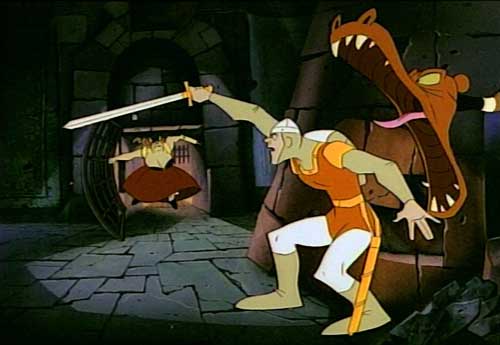 Dragons Lair Dirk the Dragon Slayer
At its peak, Dragon's Lair brings in on average around $1400 a
week, about 80 times the amount of a conventional game at the time. In the first eight
months of its release to the arcades, the game grosses 32 million dollars worth of quarters.
Huge crowds gather around the machines, causing operators to install additional monitors
on top of them to appease the thronging masses of players vying for a look. Starcom sells
43 million dollars worth of systems. Dragon's Lair also makes the biggest inroads into
popular culture since the Pac-Man bonanza. Lunch boxes, board games, books, trading cards,
and a moat-load of other merchandise hits the streets. Perhaps best cementing its status
as an early 80's icon, ABC's cheese-fest human interest show "That's Incredible!" features
Dragon's Lair in an on-air contest between champion players. It makes another TV appearance
as a permanent prop on NBC's popular sitcom "Silver Spoons", debuting in September 1983.
Featuring Ricky Schroder as a young kid who moves in with his rich father, seeing his
Dragon's Lair (along with Asteroids, Tempest and Gorf) sitting in the background unused
drives me crazy with jealousy. It goes on to receive the San Diego-based comic convention
ComicCon's Inkpot Award for the First Interactive Laser Disc Arcade Game, as well as an
Arkie Award from Electronic Games magazine for Best Arcade Audio/Visuals. It's also profiled
in an all-Dragon's Lair episode of the videogame TV show Starcade. The game also sparks a
debate along the lines of "Why is the Mona Lisa smiling?", as people wonder what Daphne
whispers in Dirk's ear to illicit such a reaction at the end of the game.
Dragons Lair Dirk the Dragon Slayer
At its peak, Dragon's Lair brings in on average around $1400 a
week, about 80 times the amount of a conventional game at the time. In the first eight
months of its release to the arcades, the game grosses 32 million dollars worth of quarters.
Huge crowds gather around the machines, causing operators to install additional monitors
on top of them to appease the thronging masses of players vying for a look. Starcom sells
43 million dollars worth of systems. Dragon's Lair also makes the biggest inroads into
popular culture since the Pac-Man bonanza. Lunch boxes, board games, books, trading cards,
and a moat-load of other merchandise hits the streets. Perhaps best cementing its status
as an early 80's icon, ABC's cheese-fest human interest show "That's Incredible!" features
Dragon's Lair in an on-air contest between champion players. It makes another TV appearance
as a permanent prop on NBC's popular sitcom "Silver Spoons", debuting in September 1983.
Featuring Ricky Schroder as a young kid who moves in with his rich father, seeing his
Dragon's Lair (along with Asteroids, Tempest and Gorf) sitting in the background unused
drives me crazy with jealousy. It goes on to receive the San Diego-based comic convention
ComicCon's Inkpot Award for the First Interactive Laser Disc Arcade Game, as well as an
Arkie Award from Electronic Games magazine for Best Arcade Audio/Visuals. It's also profiled
in an all-Dragon's Lair episode of the videogame TV show Starcade. The game also sparks a
debate along the lines of "Why is the Mona Lisa smiling?", as people wonder what Daphne
whispers in Dirk's ear to illicit such a reaction at the end of the game.
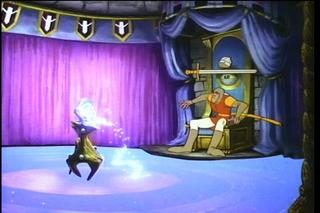 Dragons Lair throne
But even as the game becomes a cultural phenomena it is apparent there are problems, both
technical and conceptual. The first Dragon's Lair games contain the Pioneer PR-7820, one
of the first lines of laserdisc players, released in 1979. They are notoriously unreliable
and unsuited for the rough-and-tumble environment of the video arcade. Pioneer produced
25,000 of the units, with a majority of them ending up in every GM auto dealership in
the U.S., used for training mechanics and demonstrating their 1980 model lineup. 5,000
are purchased by Cinematronics, and another 5,000 used for parts since the 7820 had been
discontinued by the company. The units had been gathering dust in their warehouses until
Dragon's Lair takes off, creating a huge demand for them. They are eventually replaced
by LD-V1000 players from Pioneer, first introduced to market in 1983, which are more
reliable but still skittish. The nature of Dragon's Lair is inherently frustrating to
players learning the ropes (literally and figuratively), relying on split-second timing
and sometimes obscure on-screen clues on what to do.
Therefore, when a player protests a seemingly correct move ending in one of many
death scenes, a swift kick or jostle of the game easily knocks the disc player out
of alignment, rendering the game inoperable until it is repaired. Thus, many Dragon's
Lair cabinets spend more time with "Out of Order" signs taped to their faces than
actually working. When the game IS operating, it does suck up many a player's quarters,
but critics point out that its gameplay sucks as well. While it tends to happen between
game episodes and not in the middle of crucial moves, there is an annoying 2-second
blackout while the scanning heads of the player find the next track, breaking the flow
of the story. As well, the game is highly repetitive, extending the length of play by
simply reversing the image of many rooms.
Gameplay relies on rote memorization of the patterns and sheer reflexive movements
of the joystick and button, keeping the player on a "rail" from which they cannot deviate.
This also leads to the game's problem with "coin drop". Once someone knows all of the
moves necessary to play, they can tie up the machine for all the time it takes to play
through to the end. Thus is anyone else prevented from dropping in their two bits,
limiting the amount of players and infuriating arcade owners.
Dragons Lair throne
But even as the game becomes a cultural phenomena it is apparent there are problems, both
technical and conceptual. The first Dragon's Lair games contain the Pioneer PR-7820, one
of the first lines of laserdisc players, released in 1979. They are notoriously unreliable
and unsuited for the rough-and-tumble environment of the video arcade. Pioneer produced
25,000 of the units, with a majority of them ending up in every GM auto dealership in
the U.S., used for training mechanics and demonstrating their 1980 model lineup. 5,000
are purchased by Cinematronics, and another 5,000 used for parts since the 7820 had been
discontinued by the company. The units had been gathering dust in their warehouses until
Dragon's Lair takes off, creating a huge demand for them. They are eventually replaced
by LD-V1000 players from Pioneer, first introduced to market in 1983, which are more
reliable but still skittish. The nature of Dragon's Lair is inherently frustrating to
players learning the ropes (literally and figuratively), relying on split-second timing
and sometimes obscure on-screen clues on what to do.
Therefore, when a player protests a seemingly correct move ending in one of many
death scenes, a swift kick or jostle of the game easily knocks the disc player out
of alignment, rendering the game inoperable until it is repaired. Thus, many Dragon's
Lair cabinets spend more time with "Out of Order" signs taped to their faces than
actually working. When the game IS operating, it does suck up many a player's quarters,
but critics point out that its gameplay sucks as well. While it tends to happen between
game episodes and not in the middle of crucial moves, there is an annoying 2-second
blackout while the scanning heads of the player find the next track, breaking the flow
of the story. As well, the game is highly repetitive, extending the length of play by
simply reversing the image of many rooms.
Gameplay relies on rote memorization of the patterns and sheer reflexive movements
of the joystick and button, keeping the player on a "rail" from which they cannot deviate.
This also leads to the game's problem with "coin drop". Once someone knows all of the
moves necessary to play, they can tie up the machine for all the time it takes to play
through to the end. Thus is anyone else prevented from dropping in their two bits,
limiting the amount of players and infuriating arcade owners.
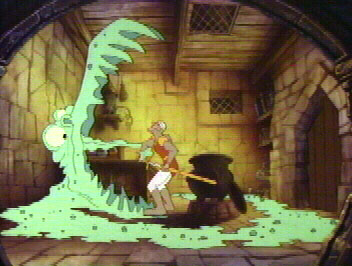 Dragons Lair Green Monster
The animation for the sequel is started almost as soon as the Dragon's Lair artwork is
finished. With a budget increased to 2 million, the sequel is named Space Ace. Its story,
written by Shannon Donnelly, details the exploits of the dashing, heroic title character
who's girlfriend Kimberly is kidnapped by the evil Commander Borf. Wielding the diabolical
Infanto-ray, Borf zaps Ace into the nerdly Dexter and is threatening to turn everyone on
Earth into a squealing ankle-biter. Dexter must race to save the girl and the planet before
Borf infantizes the universe. As well as a new story, the game also incorporates some new
design concepts. There are three different skill levels available to players: Space Cadet,
Space Captain or Space Ace. Playing Cadet level, gamers miss about half of the animation
in the game, while playing Ace covers the whole story.
In addition, while Dexter is the main hero, at certain points in the story the energizer
button on the game's control panel will flash, allowing the player to transform Dex into
the muscle-bound Space Ace and complete the scene as him, turning back into Dexter at
the end of the sequence. During the creation of the animation, actual models are built
of Dexter's space ship StarPac and Ace's Space Cycle, which are then filmed and
incorporated into the hand-drawn cells to be recoloured. This is done to aid animators
with aspects of prospective and depth perception. Once again, the voices are done by
staff members, including the processed voice of Don Bluth as the nasty Borf.
Space Ace has 35 seperate tracks for sound effects, compared to only 14 in Dragon's Lair,
and Chris Stone returns to compose a complete musical score for the game. Gameplay is
much more frenetic, placing more moves closer together during a scene. However, there
are also more flashing light clues to alert the player to the required move. With
Dyer's company now known as RDI, they refine the technology, allowing Space Ace to
access information on the laserdisc 50% faster than its predecessor. But as in Dragon's
Lair, the action still offers only limited interaction for the player, as well as
numerous scenes repeated in reverse mode. Hoping to defer the hefty cost of the
Dragon's Lair units, arcade owners had been assured that any sequels to the game
would be available as upgrade kits, allowing them to avoid the cost of purchasing
a whole new game. This turns out not to be the case, however, and Space Ace must be
purchased as a new unit. By the time the game is released late in 1983 by a newly
renamed Magicom, the laser game fad is already losing steam, and Space Ace sells only 13
million worth.
After its demonstrations at the A.M.O.A. in 1982, Sega decides that the technology in its
revolutionary Astron Belt still needs work, and the game heads back to the drawing board
even as its conception inspires a craze in laser games in the arcades. It is released in
Japan mid-way through 1983, and when the U.S. division of Sega is bought by Bally/Midway
the new owners keep fine-tuning the system. It is finally released in U.S. arcades late
in the year. It offers more playability by letting the player freely control a computer
generated spaceship from a chase view, superimposed on top of a filmed playfield. It must
do battle against charging spaceships while soaring through space, across an alien
landscape and through the tight metal corridors of a mother ship. While the attacking
ships are on film, their laser fire is computer generated. A timer can be set by the
operator to allow players 60 seconds of indestructibility, past which they will start
losing lives. The video is culled from a combination of films, primarily from the Japanese
science fiction movie "Message from Space" from prolific Toei Studios, probably most famous
for their campy Godzilla flicks. Released in 1978, the film features American actor Vic
Morrow and is a thinly veiled ripoff of Star Wars, which hit theatres only a year earlier.
Both "Message" and another movie whom Astron Belt borrows footage from, the low-budget
Roger Corman SF quickie "Battle Beyond the Stars", details the exploits of eight
intergalactic mercenaries trying to defend a planet.
Dragons Lair Green Monster
The animation for the sequel is started almost as soon as the Dragon's Lair artwork is
finished. With a budget increased to 2 million, the sequel is named Space Ace. Its story,
written by Shannon Donnelly, details the exploits of the dashing, heroic title character
who's girlfriend Kimberly is kidnapped by the evil Commander Borf. Wielding the diabolical
Infanto-ray, Borf zaps Ace into the nerdly Dexter and is threatening to turn everyone on
Earth into a squealing ankle-biter. Dexter must race to save the girl and the planet before
Borf infantizes the universe. As well as a new story, the game also incorporates some new
design concepts. There are three different skill levels available to players: Space Cadet,
Space Captain or Space Ace. Playing Cadet level, gamers miss about half of the animation
in the game, while playing Ace covers the whole story.
In addition, while Dexter is the main hero, at certain points in the story the energizer
button on the game's control panel will flash, allowing the player to transform Dex into
the muscle-bound Space Ace and complete the scene as him, turning back into Dexter at
the end of the sequence. During the creation of the animation, actual models are built
of Dexter's space ship StarPac and Ace's Space Cycle, which are then filmed and
incorporated into the hand-drawn cells to be recoloured. This is done to aid animators
with aspects of prospective and depth perception. Once again, the voices are done by
staff members, including the processed voice of Don Bluth as the nasty Borf.
Space Ace has 35 seperate tracks for sound effects, compared to only 14 in Dragon's Lair,
and Chris Stone returns to compose a complete musical score for the game. Gameplay is
much more frenetic, placing more moves closer together during a scene. However, there
are also more flashing light clues to alert the player to the required move. With
Dyer's company now known as RDI, they refine the technology, allowing Space Ace to
access information on the laserdisc 50% faster than its predecessor. But as in Dragon's
Lair, the action still offers only limited interaction for the player, as well as
numerous scenes repeated in reverse mode. Hoping to defer the hefty cost of the
Dragon's Lair units, arcade owners had been assured that any sequels to the game
would be available as upgrade kits, allowing them to avoid the cost of purchasing
a whole new game. This turns out not to be the case, however, and Space Ace must be
purchased as a new unit. By the time the game is released late in 1983 by a newly
renamed Magicom, the laser game fad is already losing steam, and Space Ace sells only 13
million worth.
After its demonstrations at the A.M.O.A. in 1982, Sega decides that the technology in its
revolutionary Astron Belt still needs work, and the game heads back to the drawing board
even as its conception inspires a craze in laser games in the arcades. It is released in
Japan mid-way through 1983, and when the U.S. division of Sega is bought by Bally/Midway
the new owners keep fine-tuning the system. It is finally released in U.S. arcades late
in the year. It offers more playability by letting the player freely control a computer
generated spaceship from a chase view, superimposed on top of a filmed playfield. It must
do battle against charging spaceships while soaring through space, across an alien
landscape and through the tight metal corridors of a mother ship. While the attacking
ships are on film, their laser fire is computer generated. A timer can be set by the
operator to allow players 60 seconds of indestructibility, past which they will start
losing lives. The video is culled from a combination of films, primarily from the Japanese
science fiction movie "Message from Space" from prolific Toei Studios, probably most famous
for their campy Godzilla flicks. Released in 1978, the film features American actor Vic
Morrow and is a thinly veiled ripoff of Star Wars, which hit theatres only a year earlier.
Both "Message" and another movie whom Astron Belt borrows footage from, the low-budget
Roger Corman SF quickie "Battle Beyond the Stars", details the exploits of eight
intergalactic mercenaries trying to defend a planet.
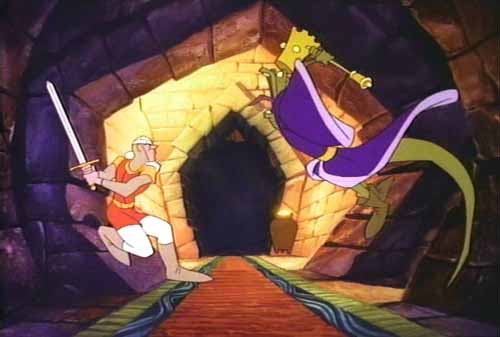 Dragons Lair 20th Anniversary - Dirk Fights King
The plot for both movies borrow liberally from Kurosawa's "The Seven Samurai", as did
indeed Star Wars. A TV series based on "Message" is produced by Toei, seen in America
under the name "Swords of the Space Ark". Yet even more footage is taken from the
"Genesis" sequence in "Star Trek II: The Wrath of Khan". And additional images are
also created specifically for the game. Absent are the nagging blackouts from other
laser based games, but the refined technology comes at a cost: the game misses most
of the Dragon's Lair-fueled boom in the arcades. Using even more footage from "Message",
along with some created for the game, Bally/Midway releases similar film-shooter Galaxy
Ranger in 1984. It offers the innovation of allowing players to choose
at certain parts in the action which path to fly during the game.
Laser games rapidly split into two factions: limited decision animated stories, and video
footage shooting games. Following the tradition of the later is M.A.C.H. 3 by Mylstar, a
division of Gottlieb. Its play is similar to Astron Belt, but instead of cheesy movie
visuals, MACH or Military Air Command Hunter features professionally shot arial photography
with the player's computer generated jet aircraft superimposed. After inserting their 50
cents, gamers have the choice to face off against enemy planes and ground targets as a
fighter, or to fly at high altitude over arial targets as a bomber.
Using an elaborate flight stick, they can fire a machine gun at the targets as well as
launch missiles as they infiltrate the enemy landscape. Targets to be destroyed are
surrounded by a computer generated yellow box. The fighter sequences are generally
low-flying affairs as the player must avoid the scenery while blowing up ground targets
and shooting oncoming enemy planes and missiles. Taking the other choice, the bomber
drops its payload on ground targets and destroys enemy fighters with its machine gun
fire. Players are warned of approaching planes by a red warning signal at the top of
the screen. Since the enemy country seems to have had some kind of nuclear mishap, the
game later provides radioactive clouds for players to avoid.
If they can survive till the end, the game takes 15 minutes to complete with a finale
airport landing. All of the footage is filmed by a special aerobatic plane with cameras
in its nose and belly. Available in a sit down cockpit and stand-up version, the game is
a popular hit and is rated the #1 Player's Choice in RePlay magazine.
Dragons Lair 20th Anniversary - Dirk Fights King
The plot for both movies borrow liberally from Kurosawa's "The Seven Samurai", as did
indeed Star Wars. A TV series based on "Message" is produced by Toei, seen in America
under the name "Swords of the Space Ark". Yet even more footage is taken from the
"Genesis" sequence in "Star Trek II: The Wrath of Khan". And additional images are
also created specifically for the game. Absent are the nagging blackouts from other
laser based games, but the refined technology comes at a cost: the game misses most
of the Dragon's Lair-fueled boom in the arcades. Using even more footage from "Message",
along with some created for the game, Bally/Midway releases similar film-shooter Galaxy
Ranger in 1984. It offers the innovation of allowing players to choose
at certain parts in the action which path to fly during the game.
Laser games rapidly split into two factions: limited decision animated stories, and video
footage shooting games. Following the tradition of the later is M.A.C.H. 3 by Mylstar, a
division of Gottlieb. Its play is similar to Astron Belt, but instead of cheesy movie
visuals, MACH or Military Air Command Hunter features professionally shot arial photography
with the player's computer generated jet aircraft superimposed. After inserting their 50
cents, gamers have the choice to face off against enemy planes and ground targets as a
fighter, or to fly at high altitude over arial targets as a bomber.
Using an elaborate flight stick, they can fire a machine gun at the targets as well as
launch missiles as they infiltrate the enemy landscape. Targets to be destroyed are
surrounded by a computer generated yellow box. The fighter sequences are generally
low-flying affairs as the player must avoid the scenery while blowing up ground targets
and shooting oncoming enemy planes and missiles. Taking the other choice, the bomber
drops its payload on ground targets and destroys enemy fighters with its machine gun
fire. Players are warned of approaching planes by a red warning signal at the top of
the screen. Since the enemy country seems to have had some kind of nuclear mishap, the
game later provides radioactive clouds for players to avoid.
If they can survive till the end, the game takes 15 minutes to complete with a finale
airport landing. All of the footage is filmed by a special aerobatic plane with cameras
in its nose and belly. Available in a sit down cockpit and stand-up version, the game is
a popular hit and is rated the #1 Player's Choice in RePlay magazine.
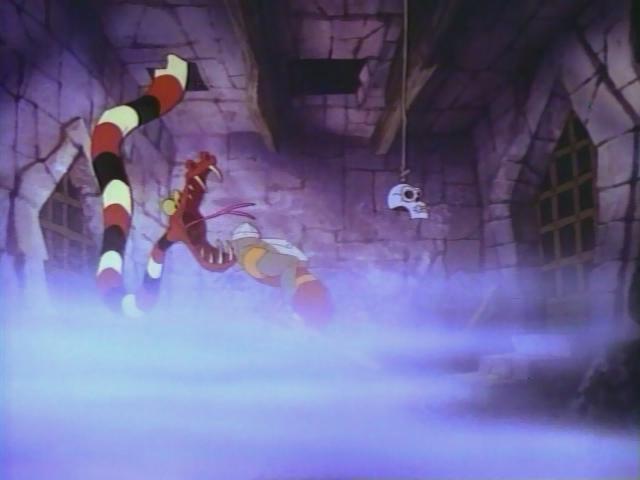 Dragons Lair Coiled Snake Attack
At the time M.A.C.H. 3 comes out in 1983, Gottlieb is enjoying a big hit with its
"conventional" arcade game Q*bert, featuring a furry, big-nosed creature jumping through a
M.C. Escher inspired playfield turning tiles different colours while being chased by a
coiled snake. The lead designer of the game is Warren Davis, and he is tapped early on in
the project to produce a MACH sequel that will be available as a conversion kit for the
original. It is the idea of Dennis Nordman, who goes on to Williams/Bally/Midway to designs
pinball games (Blackwater 1000, Party Zone, Whitewater, Indy 500, Dr. Dude, Demolition Man,
Elvira and Scared Stiff), to develop a laser game that would replicate the feel of a 1950's
martian movie.
He writes a script around the premise with Gottlieb art director Rich Tracy
and with the project titled Us Vs. Them the team begins to put together the footage. The
story deals, as one can surmise from the title, with aliens attacking Earth. From a central
command, military leaders send out pilots to fight the invaders from multiple points around
the world. Utilizing the unique process of showing multiple views during a battle, the
skirmishes take place in such locations as over the skyline of Chicago (home of Gottleib),
a desert, a forest, and a final showdown in the alien mothership. A production company
shoots all of the outdoor photography excluding the Chicago footage, using planes and
helicopters. Nordman and Davis personally supervise the Chicago shoot, with a steadicam
operator hanging out of a helicopter during a brisk, -26 degree Chicago day. They also are
present during a shoot in a forest in Kalamazoo, Michigan. Inspired by the Endor forest
scenes in "Return of the Jedi", the footage is taken as the steadicam operator moves
through the dense trees. Sets are built in Chicago for between-wave cinematics taking
place inside the control room and in the fighter cockpits, with Davis acting as
co-director.
A music soundtrack is composed by Gottlieb's in-house sound designer Dave Zabriskie, who
conducts an orchestra for the score. Davis programs the game, as well as edits the footage
together. Jeff Lee creates the computer overlay graphics of the player's fighter and enemy
ships, and Dave Thiel does the sound; both had worked with Davis on Q*bert. While the game
does wonders with the laserdisc shooter genre, by the time Us. Vs. Them is released, the
laser game market is beginning to tarnish. Orders for M.A.C.H. 3 dwindle, reducing the
market for its sequel, and Gottlieb enters into a lawsuit against its distributors. Us Vs.
Them is eventually released in 1984, but never has a chance to succeed.
One of the many animated game contenders is Cliff Hanger, licensed by Stern Electronics
from Taito in 1983 for release in North America. It tells the story of Cliff Hanger, master
cat burglar. In a resoundingly familiar plotline, his girlfriend Princess Clarissa is
kidnapped by the evil Count Drago, and our hero must blah blah blah.... But wait! Our "hero"
is actually using an alias! His real name is Lupin III, star of an immensely popular anime
movie and TV series in Japan. Starting as a manga comic series in the late 60s by Katou
Kazuhiko a.k.a. Monkey Punch, it is then developed into a TV series by Tokyo Movie Shinsha
Co in 1971. Lupin's first appearance as a video game comes with Taito's Lupin III, released
in 1980. In his laser incarnation he is accompanied by his longtime companions: Jigen,
Goeman, and Fujiko. The animation comes mainly from 1979 Lupin film "The Castle of
Cagliostro", with additional footage from 1978's "The Mystery of Mamo". The dialog for the
game is changed in the English dubbing, turning Lupin into the daring Cliff. While it may
not have a particularly original storyline, it does offer a new way of playing: the control
panel contains a joystick and two buttons.
One to control Lup...er, I mean CLIFF's hands, and the other his legs. When the action
onscreen requires it, players must hit the correct button to perform the needed move.
The graphics may not be quite on par with Dragon's Lair, but this is still a nice
indoctrination into Japanese Anime which at the time of the game's release is very
rare to find in America. Available to operators is a dip switch inside the cabinet
to allow on-screen clues for the players to follow. And there is also another alteration
made available for the game soon after its release. If the player fails in his
mission and loses a life, a scene is shown of Cliff getting hanged from a gallows. Cliff.
Hanged. Cliff Hanger. Get it? Even though Cliff appears in a pale blue tux at the end of
the sequence to pretty much say "just kidding", watchdog groups are not amused and a
modification is made available to skip the neck-stretching. Another child safeguard is
designed into the game, although this one probably inadvertently: a scene with Cliff
fighting a band of Ninjas is so incredibly difficult, with a rash of moves jumbled on top
of each other in rapid-fire sequence, it prevents most kids from making it to the end and
seeing what has to be one of the most gruesome finales in videogame history. Even so, only
550 machines are sold by Stern, and the game quickly drops off arcade radar screens.
Dragons Lair Coiled Snake Attack
At the time M.A.C.H. 3 comes out in 1983, Gottlieb is enjoying a big hit with its
"conventional" arcade game Q*bert, featuring a furry, big-nosed creature jumping through a
M.C. Escher inspired playfield turning tiles different colours while being chased by a
coiled snake. The lead designer of the game is Warren Davis, and he is tapped early on in
the project to produce a MACH sequel that will be available as a conversion kit for the
original. It is the idea of Dennis Nordman, who goes on to Williams/Bally/Midway to designs
pinball games (Blackwater 1000, Party Zone, Whitewater, Indy 500, Dr. Dude, Demolition Man,
Elvira and Scared Stiff), to develop a laser game that would replicate the feel of a 1950's
martian movie.
He writes a script around the premise with Gottlieb art director Rich Tracy
and with the project titled Us Vs. Them the team begins to put together the footage. The
story deals, as one can surmise from the title, with aliens attacking Earth. From a central
command, military leaders send out pilots to fight the invaders from multiple points around
the world. Utilizing the unique process of showing multiple views during a battle, the
skirmishes take place in such locations as over the skyline of Chicago (home of Gottleib),
a desert, a forest, and a final showdown in the alien mothership. A production company
shoots all of the outdoor photography excluding the Chicago footage, using planes and
helicopters. Nordman and Davis personally supervise the Chicago shoot, with a steadicam
operator hanging out of a helicopter during a brisk, -26 degree Chicago day. They also are
present during a shoot in a forest in Kalamazoo, Michigan. Inspired by the Endor forest
scenes in "Return of the Jedi", the footage is taken as the steadicam operator moves
through the dense trees. Sets are built in Chicago for between-wave cinematics taking
place inside the control room and in the fighter cockpits, with Davis acting as
co-director.
A music soundtrack is composed by Gottlieb's in-house sound designer Dave Zabriskie, who
conducts an orchestra for the score. Davis programs the game, as well as edits the footage
together. Jeff Lee creates the computer overlay graphics of the player's fighter and enemy
ships, and Dave Thiel does the sound; both had worked with Davis on Q*bert. While the game
does wonders with the laserdisc shooter genre, by the time Us. Vs. Them is released, the
laser game market is beginning to tarnish. Orders for M.A.C.H. 3 dwindle, reducing the
market for its sequel, and Gottlieb enters into a lawsuit against its distributors. Us Vs.
Them is eventually released in 1984, but never has a chance to succeed.
One of the many animated game contenders is Cliff Hanger, licensed by Stern Electronics
from Taito in 1983 for release in North America. It tells the story of Cliff Hanger, master
cat burglar. In a resoundingly familiar plotline, his girlfriend Princess Clarissa is
kidnapped by the evil Count Drago, and our hero must blah blah blah.... But wait! Our "hero"
is actually using an alias! His real name is Lupin III, star of an immensely popular anime
movie and TV series in Japan. Starting as a manga comic series in the late 60s by Katou
Kazuhiko a.k.a. Monkey Punch, it is then developed into a TV series by Tokyo Movie Shinsha
Co in 1971. Lupin's first appearance as a video game comes with Taito's Lupin III, released
in 1980. In his laser incarnation he is accompanied by his longtime companions: Jigen,
Goeman, and Fujiko. The animation comes mainly from 1979 Lupin film "The Castle of
Cagliostro", with additional footage from 1978's "The Mystery of Mamo". The dialog for the
game is changed in the English dubbing, turning Lupin into the daring Cliff. While it may
not have a particularly original storyline, it does offer a new way of playing: the control
panel contains a joystick and two buttons.
One to control Lup...er, I mean CLIFF's hands, and the other his legs. When the action
onscreen requires it, players must hit the correct button to perform the needed move.
The graphics may not be quite on par with Dragon's Lair, but this is still a nice
indoctrination into Japanese Anime which at the time of the game's release is very
rare to find in America. Available to operators is a dip switch inside the cabinet
to allow on-screen clues for the players to follow. And there is also another alteration
made available for the game soon after its release. If the player fails in his
mission and loses a life, a scene is shown of Cliff getting hanged from a gallows. Cliff.
Hanged. Cliff Hanger. Get it? Even though Cliff appears in a pale blue tux at the end of
the sequence to pretty much say "just kidding", watchdog groups are not amused and a
modification is made available to skip the neck-stretching. Another child safeguard is
designed into the game, although this one probably inadvertently: a scene with Cliff
fighting a band of Ninjas is so incredibly difficult, with a rash of moves jumbled on top
of each other in rapid-fire sequence, it prevents most kids from making it to the end and
seeing what has to be one of the most gruesome finales in videogame history. Even so, only
550 machines are sold by Stern, and the game quickly drops off arcade radar screens.
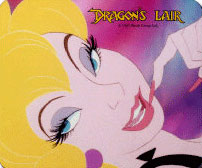 Dragons Lair Dauphine
Are you seeing a pattern yet? When the Space Ace animation is completed, Bluth Group
starts right in on the Dragon's Lair sequel, "Dragon's Lair II: Time Warp". The story
has Dirk and Daphne married with 13 kids, and Daph is unsurprisingly kidnapped by Dirk's
old nemesis Mordread. This requires our man in tights to use a time machine and chase the
old crone through famous periods in time. Highlighted are even more graphic death scenes
than the original. But as the market for the game collapses Cinematronics pulls the plug
with a heartbreaking 80% of the animation work finished. Determined to see the game's
release, Bluth continues to work on the project.
Dragons Lair Dauphine
Are you seeing a pattern yet? When the Space Ace animation is completed, Bluth Group
starts right in on the Dragon's Lair sequel, "Dragon's Lair II: Time Warp". The story
has Dirk and Daphne married with 13 kids, and Daph is unsurprisingly kidnapped by Dirk's
old nemesis Mordread. This requires our man in tights to use a time machine and chase the
old crone through famous periods in time. Highlighted are even more graphic death scenes
than the original. But as the market for the game collapses Cinematronics pulls the plug
with a heartbreaking 80% of the animation work finished. Determined to see the game's
release, Bluth continues to work on the project.
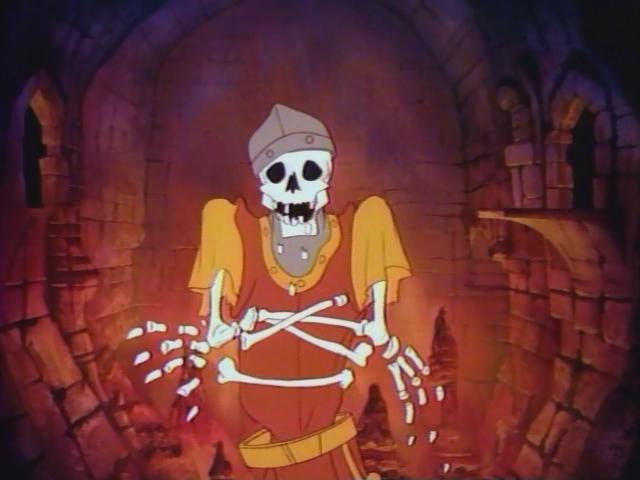 Dragons Lair - Dirk Becomes A Bunch Of Bones
After meeting Morris Sullivan, a dealer in classical animation, they form Sullivan
Bluth Interactive Media, and under that development label the game is eventually
released to arcades by Leland Corporation in 1992. Also released is a conversion kit
to put the new game into Space Ace cabinets, but the laser days are long gone and the
game sinks amid a myriad of Street Fighter clones. In 1984 Bluth gets the rights to
make a Dragon's Lair movie, and a script is written to chronicle the events of how a
teenaged Dirk and Daphne meet. Called "Dragon's Lair: The Legend", the subject matter
is much darker than the game, and this combined with the fact that studios are skittish
about the rapid demise of the laser market creates an acute lack of financing for Bluth
and company. But both Dragon's Lair and Space Ace do make it out of game cabinets and
into living rooms in TV cartoon versions done by cut-rate animation house Ruby Spears.
Dragons Lair - Dirk Becomes A Bunch Of Bones
After meeting Morris Sullivan, a dealer in classical animation, they form Sullivan
Bluth Interactive Media, and under that development label the game is eventually
released to arcades by Leland Corporation in 1992. Also released is a conversion kit
to put the new game into Space Ace cabinets, but the laser days are long gone and the
game sinks amid a myriad of Street Fighter clones. In 1984 Bluth gets the rights to
make a Dragon's Lair movie, and a script is written to chronicle the events of how a
teenaged Dirk and Daphne meet. Called "Dragon's Lair: The Legend", the subject matter
is much darker than the game, and this combined with the fact that studios are skittish
about the rapid demise of the laser market creates an acute lack of financing for Bluth
and company. But both Dragon's Lair and Space Ace do make it out of game cabinets and
into living rooms in TV cartoon versions done by cut-rate animation house Ruby Spears.
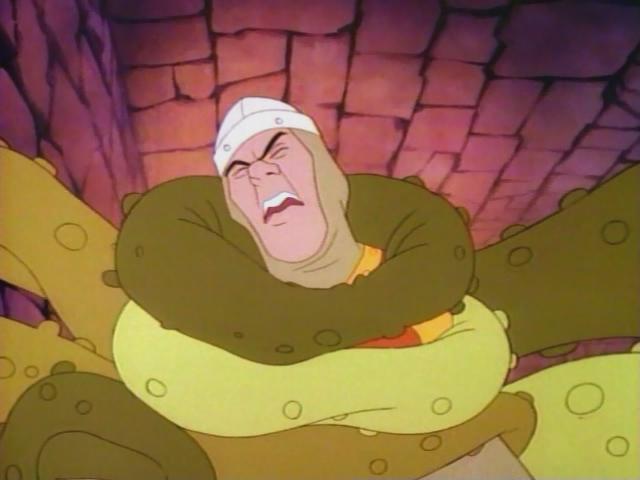 Dragons Lair - Octopus Tentacles
"Dragon's Lair" lasts one season on ABC between 1984-85, featuring Dirk's repeated
rescuing of Daphne from the clawed clutches of Cinge (note the name change). It is an
unusual entry for a Saturday morning show as each program has Dirk making multiple
decisions for his actions, which in some scenarios would lead to his demise. In true
Wyle E. Coyote fashion, however, Dirk would soon appear unmolested. The Space Ace
version airs as part of CBS's saturday morning toon show Saturday Supercade in 1984,
with Ace's segment replacing Pitfall Harry who apparently falls into the blackened pit
of the home videogame crash. Kimberly is voiced by Nancy Cartright, who also does voices
for NBC toon shows "Snorks" and "Pound Puppies" before ending up as the voice of Bart on
"The Simpsons". Saturday Supercade itself gets the axe in August of 1985. In 1984 yet
another laser game concept is created by Bluth Group, called "Sea Beast and Barnacle
Bill". It ends up shelved along with Legend.
Dragons Lair - Octopus Tentacles
"Dragon's Lair" lasts one season on ABC between 1984-85, featuring Dirk's repeated
rescuing of Daphne from the clawed clutches of Cinge (note the name change). It is an
unusual entry for a Saturday morning show as each program has Dirk making multiple
decisions for his actions, which in some scenarios would lead to his demise. In true
Wyle E. Coyote fashion, however, Dirk would soon appear unmolested. The Space Ace
version airs as part of CBS's saturday morning toon show Saturday Supercade in 1984,
with Ace's segment replacing Pitfall Harry who apparently falls into the blackened pit
of the home videogame crash. Kimberly is voiced by Nancy Cartright, who also does voices
for NBC toon shows "Snorks" and "Pound Puppies" before ending up as the voice of Bart on
"The Simpsons". Saturday Supercade itself gets the axe in August of 1985. In 1984 yet
another laser game concept is created by Bluth Group, called "Sea Beast and Barnacle
Bill". It ends up shelved along with Legend.
 Thayer's Quest
Dyer and RDI are still kicking, producing another arcade animated laser game called Thayer's
Quest in 1984, offered as a conversion kit for Dragon's Lair and Space Ace cabinets. The
game mechanics are truly unlike anything seen in the arcades before. Instead of a joystick
and buttons, the game features a membrane keyboard for players to input their actions. It
is the first realization of Dyer's long obsession with the Shadoan project that spun off
Dragon's Lair. Taking place 1000 years in the past, the five kingdoms of Weigard, Illes,
Iscar, the Far Reaches and Shadoan live in peace under the auspices of the benevolent
Elder leaders. But throwing in with the dark forces of Shadoan is the evil wizard Sorsabal,
who overruns the five kingdoms and destroys the Elders.
Realizing their approaching demise, the Elders preserve their power by breaking up the
Hand of Quoid (pronounced kwode), a powerful amulet that is the source of all magic in
the kingdom. Each of the five amulet relics are hidden in each land. The player assumes
the role of Thayer Alconred, last in the bloodline of the Elders, in his quest to reunite
both the amulet and his fallen homeland. The game, however, contains only three of the
five lands: Weigard, Illes and Iscar. Along the way Thayer finds various magic items,
all listed on the keyboard, and Players must realize where and when to use each item.
Thayer's Quest is a remarkable attempt at recreating the feel of a role
playing game in arcade game form.
Thayer's Quest
Dyer and RDI are still kicking, producing another arcade animated laser game called Thayer's
Quest in 1984, offered as a conversion kit for Dragon's Lair and Space Ace cabinets. The
game mechanics are truly unlike anything seen in the arcades before. Instead of a joystick
and buttons, the game features a membrane keyboard for players to input their actions. It
is the first realization of Dyer's long obsession with the Shadoan project that spun off
Dragon's Lair. Taking place 1000 years in the past, the five kingdoms of Weigard, Illes,
Iscar, the Far Reaches and Shadoan live in peace under the auspices of the benevolent
Elder leaders. But throwing in with the dark forces of Shadoan is the evil wizard Sorsabal,
who overruns the five kingdoms and destroys the Elders.
Realizing their approaching demise, the Elders preserve their power by breaking up the
Hand of Quoid (pronounced kwode), a powerful amulet that is the source of all magic in
the kingdom. Each of the five amulet relics are hidden in each land. The player assumes
the role of Thayer Alconred, last in the bloodline of the Elders, in his quest to reunite
both the amulet and his fallen homeland. The game, however, contains only three of the
five lands: Weigard, Illes and Iscar. Along the way Thayer finds various magic items,
all listed on the keyboard, and Players must realize where and when to use each item.
Thayer's Quest is a remarkable attempt at recreating the feel of a role
playing game in arcade game form.
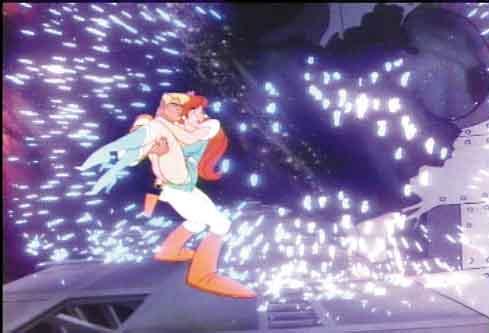 Dragons Lair 20th Anniversary
When gamers first start the game, they are given an opportunity to enter their first
and last name on the keyboard. When they are finished a voice synthesizer says their
name, and if people are unhappy with the pronunciation they are allowed to try another
spelling to improve how it sounds. The player is then called by name throughout the game.
The various items retrieved by Thayer are stored on his person, and players can look at
them through an inventory review system. Other features include such innovations in the
laser game field as multiple points in the game where Thayer can heal himself, as well
as a game save feature. When players lose one of their lives, they are resurrected at a
point near when they died. When they lose their last life, the game ends and saves their
game. With the game's ability to save up to ten games, the player is able to continue if
he is one of the last ten people to play. If they make it to the end, the game promises
that the story will continue on a second disc, which unfortunately never materializes.
Even though laserdisc games succumb to a thousand Dirk-like deaths, Dragon's Lair lives on.
14 years after the original is released, it ends up as one of only three videogames in the
Smithsonian Museum in Washington D.C., alongside trendsetters PONG and Pac-Man.
Approximately 109 million dollars has been made through the years by the various Dragon's
Lair spin-offs. There are at least 30 translations of the game to such platforms as the
Commodore 64 and Amiga, Atari ST and Jaguar, Apple IIGS and Macintosh, 3D0, CD-i, Nintendo
NES and SNES, Sega CD and IBM PC DOS, CD-ROM and DVD. In a startling move, the Coleco ADAM
version is licenced by the company for an incredible 2 million dollars. Direct sequels of
the concept have titles like Escape from Singe's Castle, and The Curse of Mordread.
Dragons Lair 20th Anniversary
When gamers first start the game, they are given an opportunity to enter their first
and last name on the keyboard. When they are finished a voice synthesizer says their
name, and if people are unhappy with the pronunciation they are allowed to try another
spelling to improve how it sounds. The player is then called by name throughout the game.
The various items retrieved by Thayer are stored on his person, and players can look at
them through an inventory review system. Other features include such innovations in the
laser game field as multiple points in the game where Thayer can heal himself, as well
as a game save feature. When players lose one of their lives, they are resurrected at a
point near when they died. When they lose their last life, the game ends and saves their
game. With the game's ability to save up to ten games, the player is able to continue if
he is one of the last ten people to play. If they make it to the end, the game promises
that the story will continue on a second disc, which unfortunately never materializes.
Even though laserdisc games succumb to a thousand Dirk-like deaths, Dragon's Lair lives on.
14 years after the original is released, it ends up as one of only three videogames in the
Smithsonian Museum in Washington D.C., alongside trendsetters PONG and Pac-Man.
Approximately 109 million dollars has been made through the years by the various Dragon's
Lair spin-offs. There are at least 30 translations of the game to such platforms as the
Commodore 64 and Amiga, Atari ST and Jaguar, Apple IIGS and Macintosh, 3D0, CD-i, Nintendo
NES and SNES, Sega CD and IBM PC DOS, CD-ROM and DVD. In a startling move, the Coleco ADAM
version is licenced by the company for an incredible 2 million dollars. Direct sequels of
the concept have titles like Escape from Singe's Castle, and The Curse of Mordread.
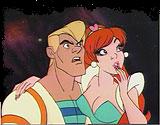 Space Ace
Even a Color Gameboy version is announced by Dyer, developed under the Dragon's Lair
LLC banner in partnership with Digital Eclipse. Practically every scene is to be fully
rendered for the portable device, and the game is scheduled for release by the end of
the year 2000. Theaborted Dragon's Lair movie seems to have been taken off the shelf and
dusted off, as rumours begin surfacing at the end of the millenium of its development.
And Bluth and Dyer have created game production house Dragonstone Software to create a
new generation of games, including new 3D remakes of both Dragon's Lair and Space Ace.
Their first is called, unsurprisingly, Dragon's Lair 3D. The game is to be distributed
by Blue Byte Software, best known as the makers of the Settlers series. Scheduled to be
released in the first quarter of 2001, the game features state-of-the-art graphics and
finally offers players what they've been waiting 18 years for: full, free-roaming control
of bumbling Dirk the Daring in his eternal struggle through the castle to reach his
perloined princess. Lead on, adventurer...your quest awaits!
---------------------------------------------------------------------------------------
Manufacturer: Cinematronics
Year: 1983
Class: Wide Release
Genre: Adventure
Type: Videogame
Monitor:
Orientation: Horizontal
Type: Raster: Standard Resolution
CRT: Color
Conversion Class: unique
Number of Simultaneous Players: 1
Maximum number of Players: 2
Gameplay: Alternating
Control Panel Layout: Single Player Ambidextrous
Controls:
Joystick: 8-way
Buttons: 1
Sound: Unamplified Stereo (requires two-channel amp)
Description
Dirk The Daring travels, searching through a castle for Princess Daphne who has been
kidnapped by Singe The Dragon. Cinematronics' first laserdisc game done by former
Disney animator, Don Bluth. Very popular.
Cabinet Information
This game has a unique three-sided marquee. Instead of being silk screened, the graphic
was printed on cloth and then glued on to a frame. In the back of the cabinet, there is
the standard access door, as well as a seperate drawer in the bottom that holds the
laserdisc player. Score, lives, and credits are shown on an LED display above the screen.
Cheats, Tricks and Bugs
For a complete set of strategies go to:
http://www.dragons-lair-project.com/community/moves/lair/easy.asp
Conversion
It is possible to convert this game to Space Ace by swapping the laserdisc and the EEPROMs.
Space Ace
Even a Color Gameboy version is announced by Dyer, developed under the Dragon's Lair
LLC banner in partnership with Digital Eclipse. Practically every scene is to be fully
rendered for the portable device, and the game is scheduled for release by the end of
the year 2000. Theaborted Dragon's Lair movie seems to have been taken off the shelf and
dusted off, as rumours begin surfacing at the end of the millenium of its development.
And Bluth and Dyer have created game production house Dragonstone Software to create a
new generation of games, including new 3D remakes of both Dragon's Lair and Space Ace.
Their first is called, unsurprisingly, Dragon's Lair 3D. The game is to be distributed
by Blue Byte Software, best known as the makers of the Settlers series. Scheduled to be
released in the first quarter of 2001, the game features state-of-the-art graphics and
finally offers players what they've been waiting 18 years for: full, free-roaming control
of bumbling Dirk the Daring in his eternal struggle through the castle to reach his
perloined princess. Lead on, adventurer...your quest awaits!
---------------------------------------------------------------------------------------
Manufacturer: Cinematronics
Year: 1983
Class: Wide Release
Genre: Adventure
Type: Videogame
Monitor:
Orientation: Horizontal
Type: Raster: Standard Resolution
CRT: Color
Conversion Class: unique
Number of Simultaneous Players: 1
Maximum number of Players: 2
Gameplay: Alternating
Control Panel Layout: Single Player Ambidextrous
Controls:
Joystick: 8-way
Buttons: 1
Sound: Unamplified Stereo (requires two-channel amp)
Description
Dirk The Daring travels, searching through a castle for Princess Daphne who has been
kidnapped by Singe The Dragon. Cinematronics' first laserdisc game done by former
Disney animator, Don Bluth. Very popular.
Cabinet Information
This game has a unique three-sided marquee. Instead of being silk screened, the graphic
was printed on cloth and then glued on to a frame. In the back of the cabinet, there is
the standard access door, as well as a seperate drawer in the bottom that holds the
laserdisc player. Score, lives, and credits are shown on an LED display above the screen.
Cheats, Tricks and Bugs
For a complete set of strategies go to:
http://www.dragons-lair-project.com/community/moves/lair/easy.asp
Conversion
It is possible to convert this game to Space Ace by swapping the laserdisc and the EEPROMs.
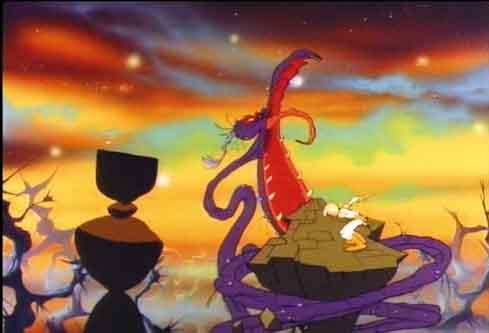 Dragons Lair - Dirk Becomes A Bunch Of Bones
Game Introduction
In this animated laserdisc game, the player assumes the role of Dirk The Daring, a
heroic knight armed with a sword, who searches through the Haunted Castle in an attempt
to rescue the beautiful Princess Daphne from the evil Singe The Dragon. In order for Dirk
to accomplish his goal, he must get to The Dragon's Lair. As he travels, he will have all
kinds of obstacles to overcome and he will be confronted by all kinds of fearsome fiends
like The Lava Monsters, The Giddy Goons, The Crypt Creeps, The Lizard King, The Smithee,
The Grim Reaper, The Black Knight and others.
The joystick is used to give Dirk directions and the button is used to have Dirk strike
his sword. Wrong decisions by the player cause immediate death to Dirk, but the right
decisions give him miraculous survival.
When Dirk has reached The Dragon's Lair, he will find Daphne trapped inside The Magic
Bubble and guarded by Singe. The key to The Magic Bubble is tied around Singe's neck,
so Dirk must kill him to get it. Dirk must avoid Singe and then get to The Jewel Stone
where The Magic Sword is embedded in. Afterwards, Dirk must pull The Magic Sword from
The Jewel Stone and use it to kill Singe. If Dirk succeeds, he will get the key and
unlock The Magic Bubble and free Daphne. After Daphne has been freed, she leaps into
Dirk's arms, he catches, then she kisses him and he grins modestly while she smiles
lovingly at him. Afterwards, the game is over.
Problems/Repairs
Shown also is a picture of a PR7820 laser disk player that was inside original Dragons
Lair cabinets.
Game Play
In Dragon's Lair, you do not control Dirk, rather you direct him in what to do. Areas on
the laserdisc are accessed according to which command is given. The game has 38 to 42
different episodes with over 1,000 life-and-death situations and over 200 different
decisions to make. It has been comfirmed from a video taped game that it takes about 12
minutes to complete the game if you know all the moves.
The object of the game is to help Dirk reach The Dragon's Lair, slay Singe and rescue
Daphne, but once you complete this task, the game, the quest and the story are all over
because there are no higher levels of difficulty. Basically, there is really no reason to
obtain a high score, even though points are scored based on how far you can get and how
well you can do.
From an objective viewpoint, the game looks a bit rushed in places, with a lack of
logically flowing animations (the snake room, and the tentacle room, for example). A
few scenes were not shown or played in the game, including the drawbridge, the "Ye
Boulders" sign before the rapids, and the scene after the battle against the Knight. The
European release of this game differed in gameplay. The scenes were played in the order
they are stored on the laserdisc, and the game started on the drawbridge scene that was
cut from the North American version. However, in a laserdisc classic trilogy pack for
home computers entitled "The Dragon's Lair Deluxe Pack" that contained Dragon's Lair,
Dragon's Lair II, and Space Ace, the missing scenes where put back in.
Dragons Lair - Dirk Becomes A Bunch Of Bones
Game Introduction
In this animated laserdisc game, the player assumes the role of Dirk The Daring, a
heroic knight armed with a sword, who searches through the Haunted Castle in an attempt
to rescue the beautiful Princess Daphne from the evil Singe The Dragon. In order for Dirk
to accomplish his goal, he must get to The Dragon's Lair. As he travels, he will have all
kinds of obstacles to overcome and he will be confronted by all kinds of fearsome fiends
like The Lava Monsters, The Giddy Goons, The Crypt Creeps, The Lizard King, The Smithee,
The Grim Reaper, The Black Knight and others.
The joystick is used to give Dirk directions and the button is used to have Dirk strike
his sword. Wrong decisions by the player cause immediate death to Dirk, but the right
decisions give him miraculous survival.
When Dirk has reached The Dragon's Lair, he will find Daphne trapped inside The Magic
Bubble and guarded by Singe. The key to The Magic Bubble is tied around Singe's neck,
so Dirk must kill him to get it. Dirk must avoid Singe and then get to The Jewel Stone
where The Magic Sword is embedded in. Afterwards, Dirk must pull The Magic Sword from
The Jewel Stone and use it to kill Singe. If Dirk succeeds, he will get the key and
unlock The Magic Bubble and free Daphne. After Daphne has been freed, she leaps into
Dirk's arms, he catches, then she kisses him and he grins modestly while she smiles
lovingly at him. Afterwards, the game is over.
Problems/Repairs
Shown also is a picture of a PR7820 laser disk player that was inside original Dragons
Lair cabinets.
Game Play
In Dragon's Lair, you do not control Dirk, rather you direct him in what to do. Areas on
the laserdisc are accessed according to which command is given. The game has 38 to 42
different episodes with over 1,000 life-and-death situations and over 200 different
decisions to make. It has been comfirmed from a video taped game that it takes about 12
minutes to complete the game if you know all the moves.
The object of the game is to help Dirk reach The Dragon's Lair, slay Singe and rescue
Daphne, but once you complete this task, the game, the quest and the story are all over
because there are no higher levels of difficulty. Basically, there is really no reason to
obtain a high score, even though points are scored based on how far you can get and how
well you can do.
From an objective viewpoint, the game looks a bit rushed in places, with a lack of
logically flowing animations (the snake room, and the tentacle room, for example). A
few scenes were not shown or played in the game, including the drawbridge, the "Ye
Boulders" sign before the rapids, and the scene after the battle against the Knight. The
European release of this game differed in gameplay. The scenes were played in the order
they are stored on the laserdisc, and the game started on the drawbridge scene that was
cut from the North American version. However, in a laserdisc classic trilogy pack for
home computers entitled "The Dragon's Lair Deluxe Pack" that contained Dragon's Lair,
Dragon's Lair II, and Space Ace, the missing scenes where put back in.
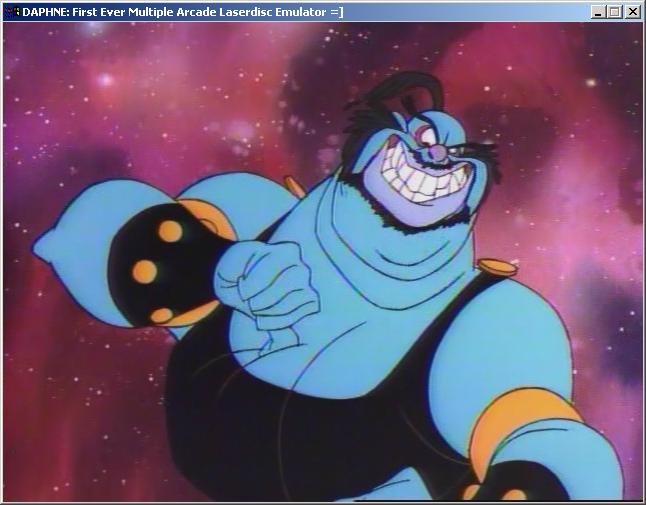 Space Ace
Contrary to popular belief, both Dragon's Lair and Space Ace did contain diagonal
movements. In some cases, these movements were simply the combination of two acceptable
moves, while in other cases the diagonal move was distinct (for example, during the
whirlpool segment, moving to the right or left is acceptable, moving diagonal up-right
or up-left is acceptable, but simply moving up results in death). In all cases, the
diagonal moves were optional, and there was always a 4-way alternative. The '91 re-release
of Space Ace contained some diagonal moves that were required.
Miscellaneous
WWW: http://www.emuunlim.com/doteaters/play2sta6.htm
Technical
Early in the production run, the PR-7820 laser disc player was used. The game PCB
uses a Z-80 processor and will have either 4 or 5 ROMs.
Trivia
When Dragon's Lair was first released, not only was it the first animated laserdisc
game (it was actually the second game to use a laserdisc), it was also the first video
game to look like a movie and be treated like a movie.After all, it was animated by
Don Bluth and other animators who used to work for Disney.
The animation for this game took six years in the making.
The animation staff used their own voices for their characters instead of hiring
professional actors, in order to keep the costs down. In fact, the animation alone
cost over a million dollars. They also used several Playboy magazines as a reference
guide for drawing Daphne.
Fixes
The laserdisc player is a limited-life device and it should be treated as fragile at all
times.
A kit is available by a company called Hi-Tech Mechanical/Electronic that allows the
original Pioneer LD-V1000 or PR-7820 to be replaced with any one of the latest Sony LDP
series laserdisc players. The LDP-1200, LDP-1450, LDP-1500, LDP-1550 and the LDP-2000
are the most common compatable Sony LDP series laserdisc players. For more information
on the laserdisc player conversion kit please visit: http://www.hi-techmechanical.com/
Legacy
Dragon's Lair
Dragon's Lair II: Time Warp
Dragonís Lair: 20th Anniversary Edition Link
---------------------------------------------------------------------------------------
[Coin-Op World Records]
Space Ace
Contrary to popular belief, both Dragon's Lair and Space Ace did contain diagonal
movements. In some cases, these movements were simply the combination of two acceptable
moves, while in other cases the diagonal move was distinct (for example, during the
whirlpool segment, moving to the right or left is acceptable, moving diagonal up-right
or up-left is acceptable, but simply moving up results in death). In all cases, the
diagonal moves were optional, and there was always a 4-way alternative. The '91 re-release
of Space Ace contained some diagonal moves that were required.
Miscellaneous
WWW: http://www.emuunlim.com/doteaters/play2sta6.htm
Technical
Early in the production run, the PR-7820 laser disc player was used. The game PCB
uses a Z-80 processor and will have either 4 or 5 ROMs.
Trivia
When Dragon's Lair was first released, not only was it the first animated laserdisc
game (it was actually the second game to use a laserdisc), it was also the first video
game to look like a movie and be treated like a movie.After all, it was animated by
Don Bluth and other animators who used to work for Disney.
The animation for this game took six years in the making.
The animation staff used their own voices for their characters instead of hiring
professional actors, in order to keep the costs down. In fact, the animation alone
cost over a million dollars. They also used several Playboy magazines as a reference
guide for drawing Daphne.
Fixes
The laserdisc player is a limited-life device and it should be treated as fragile at all
times.
A kit is available by a company called Hi-Tech Mechanical/Electronic that allows the
original Pioneer LD-V1000 or PR-7820 to be replaced with any one of the latest Sony LDP
series laserdisc players. The LDP-1200, LDP-1450, LDP-1500, LDP-1550 and the LDP-2000
are the most common compatable Sony LDP series laserdisc players. For more information
on the laserdisc player conversion kit please visit: http://www.hi-techmechanical.com/
Legacy
Dragon's Lair
Dragon's Lair II: Time Warp
Dragonís Lair: 20th Anniversary Edition Link
---------------------------------------------------------------------------------------
[Coin-Op World Records]
[Modern Events News And Commentary]
[Golden Years Index]
[Coin-Op World Records]
Click At Desired Graphic Text For Each Introduction
Biography Commentary Questions
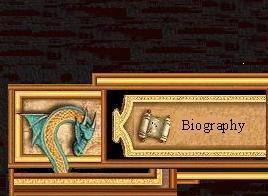
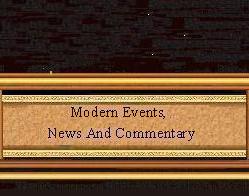
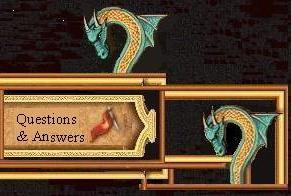
Click On Below Graphic Text For Spy Hunter Introduction

Tournament and Guinness Book Results From 1983-2004
Click On Below Graphic Text For All Video High Scores thru 2004

The Golden Era
Click On Below Graphic Text For Material On The Golden Years Of Video Games 1980's
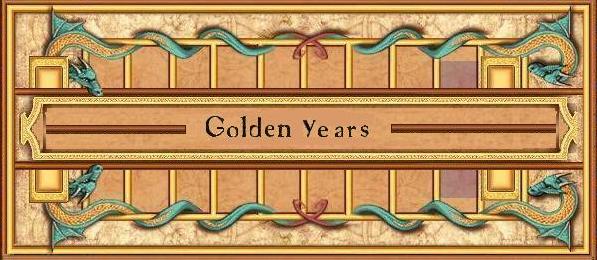
Click the Below Graphic Text to read my Conversations With Walter Day
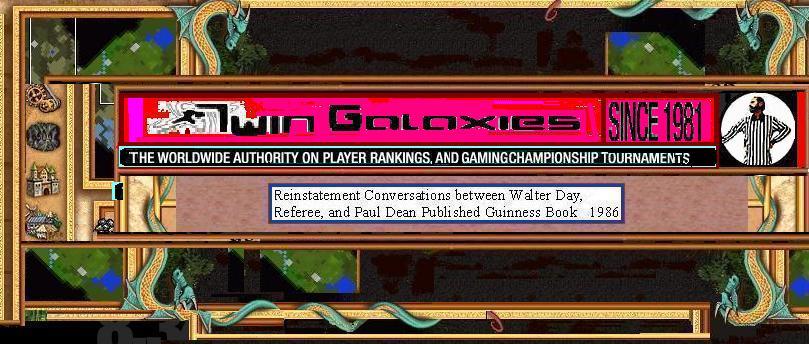
June 9, 2004 Walter Day states, "No Replay Necessary" for Paul Dean

Find A Video Game Auction Near You

Home Page

----------------- END OF PAGE
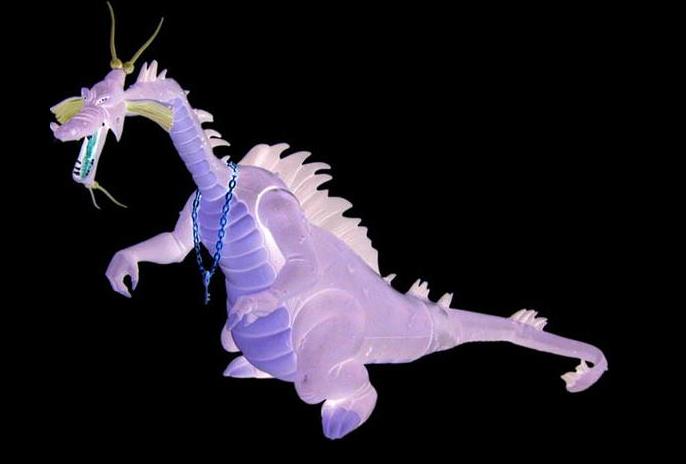



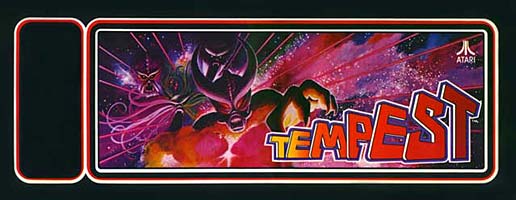



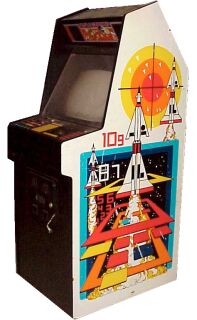

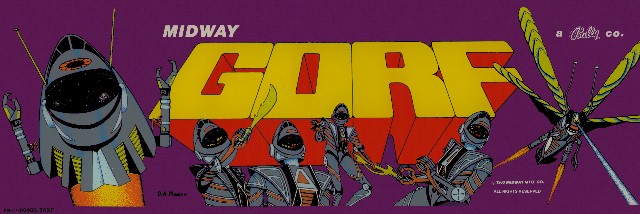
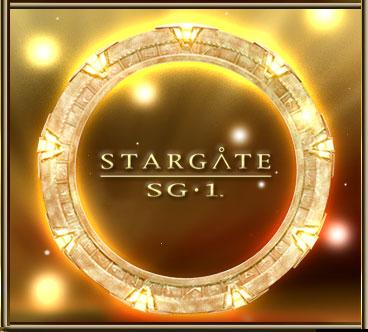

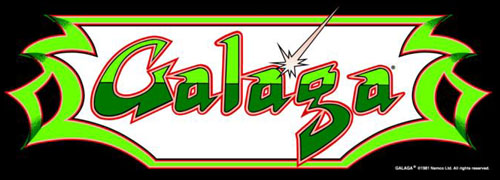



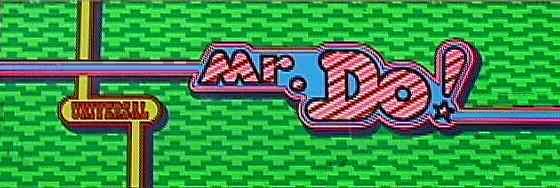




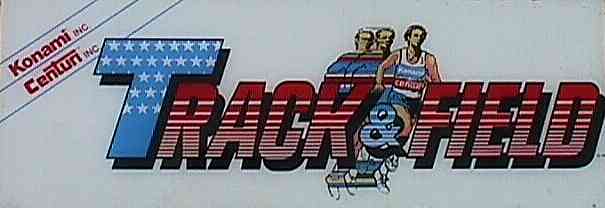
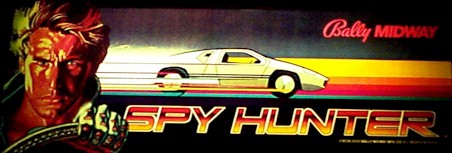

 Dragon's Lair - 1983
Dragon's Lair - 1983
 Dragons Lair Marquee
Dragons Lair Marquee
 Dragons Lair Marquee
Dragons Lair Marquee
 Dragons Purple Dragon
Dragons Purple Dragon
 Dragons Lair - Save Daphne from the clutches of the Dragon
Dragons Lair - Save Daphne from the clutches of the Dragon
 Dragons Lair 20th Anniversary New release in 2002
Dragons Lair 20th Anniversary New release in 2002
 Dragons Lair Fire
Dragons Lair Fire
 New Dragons Lair
New Dragons Lair
 Dragons Lair Spider
Dragons Lair Spider
 Dragons Lair Dirk the Dragon Slayer
Dragons Lair Dirk the Dragon Slayer
 Dragons Lair throne
Dragons Lair throne
 Dragons Lair Green Monster
Dragons Lair Green Monster
 Dragons Lair 20th Anniversary - Dirk Fights King
Dragons Lair 20th Anniversary - Dirk Fights King
 Dragons Lair Coiled Snake Attack
Dragons Lair Coiled Snake Attack
 Dragons Lair Dauphine
Dragons Lair Dauphine
 Dragons Lair - Dirk Becomes A Bunch Of Bones
Dragons Lair - Dirk Becomes A Bunch Of Bones
 Dragons Lair - Octopus Tentacles
Dragons Lair - Octopus Tentacles
 Thayer's Quest
Thayer's Quest
 Dragons Lair 20th Anniversary
Dragons Lair 20th Anniversary
 Space Ace
Space Ace
 Dragons Lair - Dirk Becomes A Bunch Of Bones
Dragons Lair - Dirk Becomes A Bunch Of Bones
 Space Ace
Space Ace